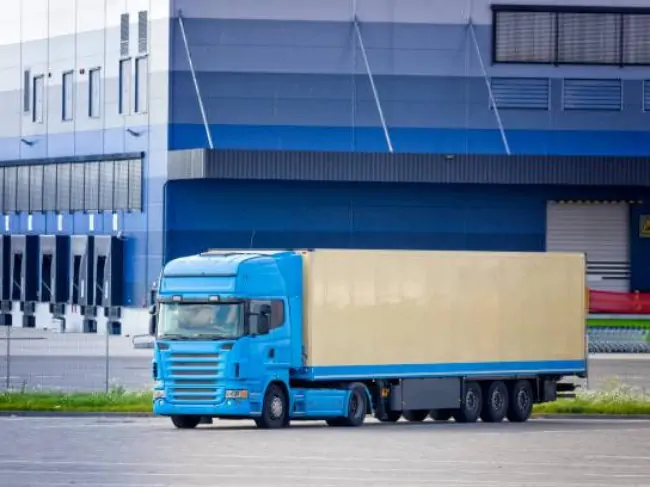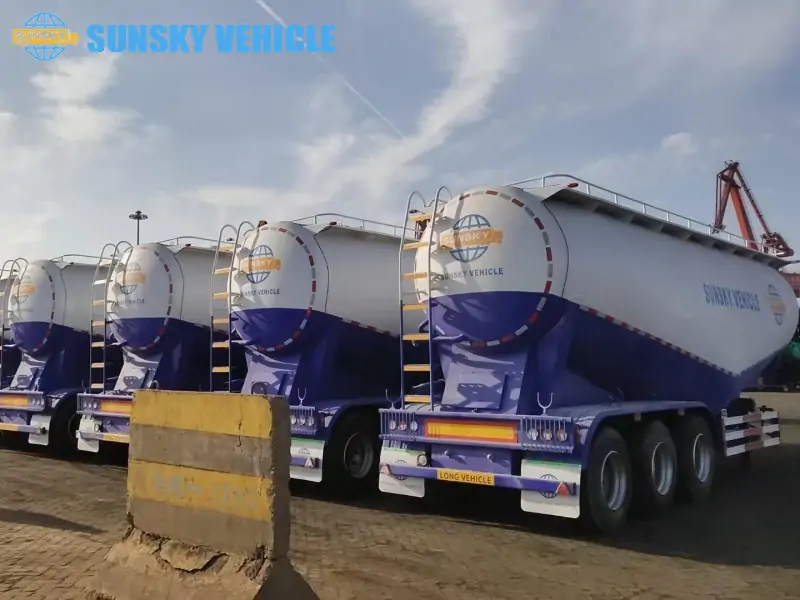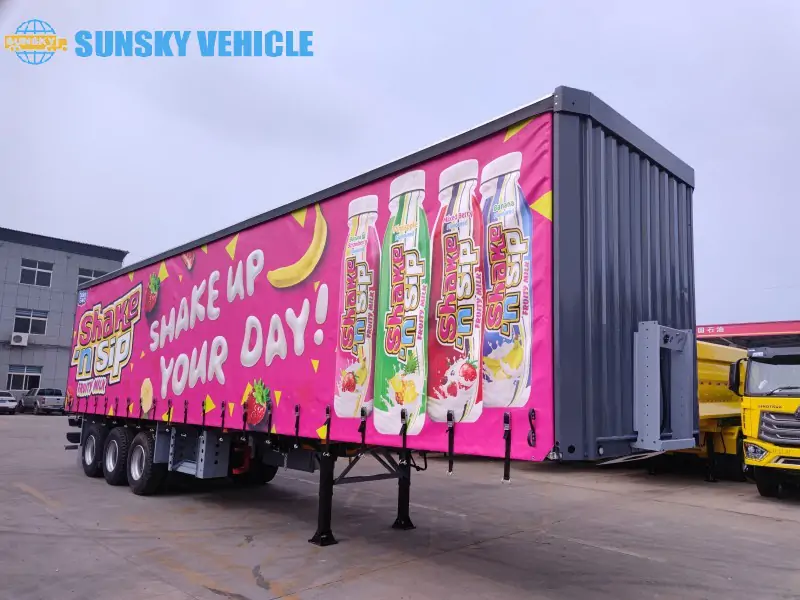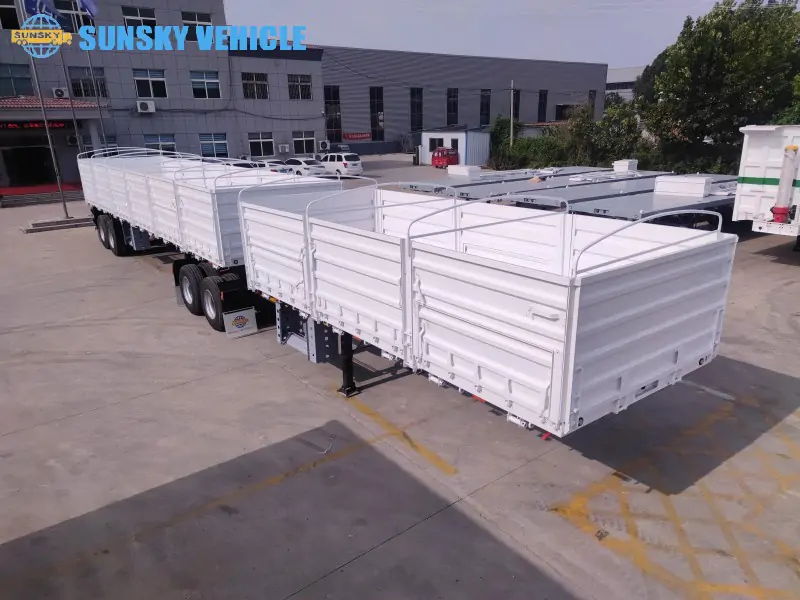
tractor truck
Our wide range of tractor trucks, whether HOWO, SHACMAN, or FAW, from day cab to sleeper, and various axle configurations. Designed for powerful performance, fuel efficiency, and long-haul reliability, our tractors can haul any load anywhere.
What is a tractor truck?
A tractor truck, often referred to as a semi-truck, prime mover, or heavy-duty truck, is the powerful front section of an articulated vehicle combination. It contains the engine, cab, and all the driving components, and its primary function is to tow various types of semi-trailers (such as flatbeds, dry vans, reefers, or tankers) using a specialized fifth-wheel coupling system. Unlike a rigid truck that carries cargo directly on its chassis, a tractor truck serves as the motive power unit for a detachable trailer. This design offers immense flexibility in logistics, allowing a single tractor unit to be paired with different trailers for diverse freight needs, making it the backbone of modern long-haul transportation.
tractor truck for sale
tractor head application scenarios
Tractor trucks, including semi-trucks and prime movers, are the backbone of logistics and heavy transportation, essential in numerous scenarios due to their versatility and power.

Long-Haul Freight Transport: The most common use, pulling dry van trailers, refrigerated trailers (reefers), or flatbeds across vast distances for general freight, consumer goods, and industrial products.

Heavy Equipment Hauling: Paired with lowboy or heavy-haul trailers to transport oversized machinery, construction equipment, wind turbine components, and other super-heavy loads.

Bulk Liquid & Gas Transport: Used with specialized tanker trailers to move fuels, chemicals, industrial gases, and other liquids over long distances, often under strict safety regulations.

Container Shipping: Hauling shipping containers from ports and intermodal yards to distribution centers, connecting global trade networks.

Logistics & Distribution Centers: shuttling various types of trailers within large distribution hubs and between warehouses, optimizing supply chain efficiency.

Specialized Industrial Applications: Providing power for unique trailers in industries like agriculture (e.g., grain hoppers), waste management (e.g., walking floor trailers), or mining (e.g., specialized ore trailers).
Standard configuration
-
truck body length
-
12R22.5 Tires
-
LED light system
-
Q345 steel
-
surface paint process
-
Leaf spring suspension
-
condition of the chassis cab
Customizable options
-
truck body height
-
truck body design
-
LHD/RHD
-
payload
-
vehicle brand
-
accessory(fuel tank,water tank)
-
color
Looking for some new designs ?
truck tractor detail design

The HOWO tractor is a high-performance heavy-duty truck with a spacious, comfortable and well-equipped cab that helps enhance the driving experience. The ergonomic design makes steering and driving easier and more comfortable.

The chassis is made of high-quality steel. Its excellent load-bearing capacity is designed for carrying heavy and large loads. It can withstand heavy loads and rough terrain, making it ideal for demanding commercial applications.

The chassis is also equipped with an advanced suspension system, which enhances the stability and handling performance of the truck, making driving smoother and more comfortable.

The HOWO tractor chassis is equipped with a reliable and efficient braking system to improve safety and minimize the risk of accidents on the road.
Video of truck tractors
HOWO NX Tractor truck
HOWO tractor
HOWO TX 6x4 430hp tractor head
HOWO 300HP tractor TRUCK

The truck type you are looking for is not found
FAQ
How does a fifth-wheel coupling work on a semi-truck tractor?
The fifth-wheel coupling is a crucial component that connects a semi-truck tractor (or tractor truck) to a semi-trailer, enabling articulated movement and power transfer. It’s essentially a large, horseshoe-shaped coupling device mounted on the tractor unit’s chassis, typically behind the cab. The trailer’s kingpin, a strong vertical pin extending downwards from the front of the trailer, slides into the fifth wheel’s open jaws.
As the prime mover backs up towards the trailer, the kingpin guides itself into a funnel-shaped opening on the fifth wheel. Once correctly positioned, a locking mechanism (often a pair of heavy-duty jaws or a single jaw) automatically closes around the kingpin, securing the trailer to the tractor truck. The design allows the trailer to pivot horizontally around the kingpin, providing the necessary articulation for turns. Additionally, the flat, greased surface of the fifth wheel allows for smooth rotational movement between the truck and trailer during braking and acceleration. This robust yet flexible connection is vital for the safe and efficient operation of any heavy-duty truck pulling a semi-trailer, distributing weight and allowing the vehicle to navigate roads effectively.
What are the key factors affecting fuel efficiency in a tractor truck?
Several key factors significantly affect the fuel efficiency of a tractor truck, or semi-truck tractor, impacting operational costs for logistics companies. Firstly, aerodynamics plays a crucial role. Modern prime movers are designed with smoother lines, fairings, and gap reducers between the cab and trailer to minimize air resistance, especially at highway speeds. Secondly, engine and drivetrain specifications are vital; this includes engine size, horsepower, torque curves, and the type of transmission (manual vs. automated manual transmission, or AMT). AMTs, for instance, can optimize gear shifts for better fuel economy.
Thirdly, driver behavior is a major determinant. Aggressive driving, excessive idling, rapid acceleration, and hard braking significantly increase fuel consumption. Smooth driving habits, adherence to speed limits, and effective use of cruise control can yield substantial savings. Fourthly, tire choice and pressure are critical. Low-rolling-resistance tires and maintaining optimal tire pressure reduce friction and improve efficiency. Finally, payload weight and terrain also matter; heavier loads and operations in hilly or mountainous regions naturally consume more fuel. Optimizing these factors is essential for maximizing the fuel efficiency of any heavy-duty truck in a fleet.
How do tractor trucks contribute to flexible logistics and supply chains?
Tractor trucks, often called semi-truck tractors or prime movers, are fundamental to flexible logistics and supply chains due to their inherent interchangeability and adaptability. Unlike rigid trucks, a single tractor unit can be quickly uncoupled from one semi-trailer and hooked up to another. This means a company doesn’t need a dedicated full truck for every type of cargo or every leg of a journey. For example, a tractor truck can drop off a dry van trailer at a distribution center, then immediately pick up a refrigerated trailer for a new assignment, or even a flatbed for an entirely different type of freight.
This flexibility allows logistics operations to maximize asset utilization. Trailers can be preloaded at warehouses, minimizing driver idle time during loading/unloading. Different trailers can be swapped for varied routes, specialized cargo, or maintenance, all while keeping the heavy-duty truck itself in constant motion. This “power unit” concept significantly streamlines fleet management, optimizes scheduling, reduces capital expenditure on specialized complete vehicles, and ultimately makes the entire supply chain more responsive and efficient in meeting diverse and dynamic transportation demands.
How do tractor trucks handle various weather conditions, and what features assist drivers?
Tractor trucks, including semi-truck tractors and prime movers, are engineered to operate in a wide array of weather conditions, though extreme weather always presents challenges. In rain, modern heavy-duty trucks come equipped with advanced braking systems like Anti-lock Braking Systems (ABS) and Traction Control Systems (TCS), which help prevent skidding. Deep-tread tires designed for wet conditions also improve grip. For snow and ice, traction control is even more critical. Drivers often use tire chains in severe conditions for added grip, and engine brakes or exhaust retarders help slow the vehicle without relying solely on friction brakes, reducing the risk of jackknifing. Some tractor units also feature locking differentials to provide power to both drive wheels for better traction.
In fog or low visibility, bright LED headlights, fog lights, and reflective markings on both the tractor truck and trailer significantly improve visibility for the driver and other road users. Modern semi-trucks increasingly include Advanced Driver-Assistance Systems (ADAS) like adaptive cruise control, lane keeping assist, and forward collision warning, which can be particularly helpful in adverse conditions, though they don’t replace driver vigilance. Drivers also rely on weather forecasts and may park if conditions become too hazardous. The robust design and advanced features of a modern tractor truck aim to maximize safety and control, even when the elements are challenging.
What role does axle configuration play in selecting the right tractor unit?
The axle configuration of a tractor unit, or tractor truck, plays a critical role in its load-carrying capacity, weight distribution, and suitability for various applications, directly impacting regulatory compliance and operational efficiency. The most common configuration for semi-truck tractors is a tandem axle drive (6×4), meaning there are two rear drive axles. This setup provides excellent traction for heavy loads, distributes weight effectively, and is the standard for long-haul freight, allowing the heavy-duty truck to legally carry heavier gross weights.
Less common but also used is a single axle drive (4×2) tractor truck. These are lighter, more fuel-efficient, and more maneuverable. They are typically used for lighter loads, short-haul urban deliveries, or for applications where maximum payload isn’t the primary concern, such as drayage within port areas. For specialized heavy-haul applications or operating in certain regions with specific weight laws, tri-axle (6×6 or 8×6) or even quad-axle (8×8) prime movers might be used. These configurations allow for greater Gross Vehicle Weight Ratings (GVWRs) by spreading the load over more axles, adhering to bridge formula laws, and enabling the transport of extremely heavy or oversized freight. Selecting the correct axle configuration for a tractor truck is vital for optimizing performance, complying with weight regulations, and ensuring the stability of the entire semi-truck combination.
Connect with us
Ready to partner? We’re convinced Sunsky Vehicle is your best choice! Reach out through the form or by phone.

*Our team will answer your inquiries within 24 hours.
*Your information will be kept strictly confidential.















